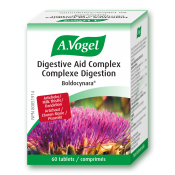What exactly is constipation?
In the simplest sense of the word, constipation stands for difficult bowel movements that are infrequent and hard to pass. There is also a distinct difference between acute and chronic constipation.
Acute constipation is more commonly due to diet, lack of exercise, or an illness and only last a few days, while chronic constipation could be hinting at a more serious condition and with abnormal bowel movements for weeks.
What are some signs or symptoms that point me to constipation?
You may have a sensation that you are not yet completely ‘empty’ or feeling as though there’s a blockage further up. Abdominal pain, feeling bloated, and a loss of appetite are common conditions as well.
Tell me more about acute constipation.
Imagine yourself purchasing fiber to start adding to your morning smoothie, but you read the instructions wrong and add three scoops instead of one and you may notice a lack of a bowel movement for the next few days....This is the perfect example of acute constipation.
When we exercise, we’re encouraging our muscles to stay active and the body to absorb nutrients via digestion. Leading a sedentary lifestyle can cause the muscles, including those of the digestive system to become sluggish. They have a hard time moving stool through the body, so the transit time is extended and could lead to constipation.
Finally, some pathogens can temporarily paralyze the normal gastrointestinal functions.
What about chronic constipation?
Constipation could be due to a narrowing of the colon known as a bowel stricture, cancer that causes the inner lining of the colon to become smaller, or a nerve issue such as Parkinson’s disease that impacts the ability of the gastrointestinal system to contract the colon. Other issues could be due to weak pelvic muscles which usually help coordinate the relaxation and contraction of the colon or hormone imbalances.
Chronic constipation becomes even more dangerous as complications arise. If you cannot expel the solid matter in your colon, eventually it becomes so hard that it dams up your bowels. This is a serious condition known as fecal impaction which causes abdominal pain, confusion, agitation, nausea, vomiting, and potentially worsening psychosis. Another danger is that when the hard stool exits, it can tear the lining of the colon.
Can you help me understand the anatomy of the colon a bit better?
Constipation is most likely to occur in the large intestine as the organs primary function is to absorb water. The large intestine is made of four layers of tissue which we will follow from outermost to innermost.
- Serosa – the outermost layer serves a protective function and keeps the colon lubricated so that it can glide against abdominal organs and the surrounding bones and muscles without being damaged by friction.
- Muscularis – as the name implies, this is layer responsible for contracting the colon and moving the fecal matter through the organ. This layer also has a nerve plexus that causes the peristaltic contractions.
- Submucosa – this layer contains the blood vessels, connective tissue and another bundle of nerves.
- Mucosa – the most inner layer that absorbs water as well as the ions and nutrients that are broken down and released by the bacteria in the gut.
There is a fine balance between the feces moving through the colon and the absorption of fluid. If you have ever made the unfortunate acquaintance with a bout of diarrhea, this occurs when the feces move too quickly through the colon. The body doesn’t have enough time to extract nutrients and water to solidify the matter. This can be extremely concerning as you lose fluids, nutrients, and electrolytes that are vital to the normal day-to-day functions of the body.
When these motions don’t work as expected, certain issues might arise.
How many bowel movements a day are considered normal?
This is a difficult question to answer as it depends on so many different factors such as your diet, level of exercise, age, and stress amongst others. Typically, individuals have a bowel movement three times a day to three times per week, but you are the most familiar with your body and would know what is out of the norm.
Do these increase with age?
As muscles lose strength with age, this can begin to include the colon and abdominal muscles. The abdominal muscles contract during a bowel movement which increases abdominal pressure and helps move the fecal matter out. You are probably familiar with this motion, especially if your family doctor has asked you to ‘bear down’. The abdominal muscles weaken with age making this motion and subsequent bowel movements more difficult.
How do I prevent constipation?
Diet is key when it comes to having a happy bowel movement. Meeting your daily insoluble fiber intake ensures your stool has enough bulk to move seamlessly through the bowel, while soluble fiber helps retain some water in the stool to make it softer and larger.
Peumus boldus contains the active component known as boldine which helps treat liver dysfunction as well as protect the liver in the long term. The liver is responsible for creating a digestive juice known as bile that helps break down fats as well as process the nutrients absorbed in the small intestine. Without the proper function of the liver, fat can accumulate on the inner lining of the intestinal wall, causing the movement of waste to slow eventually leading to constipation. Products such as a Digestive Aid Complex contain this powerful herb in addition to dandelion, milk thistle, and artichoke. This combination ensures a quick trip to the bathroom.
Additionally, it’s important to colonize and feed the good bacteria in our digestive tract. This is accomplished through the use of pre- and pro-biotics. Products such as Molkosan are whey fermented with lactobacillus, your friendly gut neighborhood bacteria that helps convert sugars to lactic acid. Lactic acid acts as a prebiotic, helping to feed the other residents of your gut microbiota, which makes them perform their job better.
Is there anything I can do to prepare to see my primary care provider?
Keeping a stool diary for the period of constipation helps your primary care provider immensely. They will most likely recommend you utilize the Bristol stool chart to record the character of your stool in addition to the frequency and how you feel.
References
https://www.aafp.org/afp/2011/0801/p299.html
http://aem.asm.org/content/74/16/4985.full
https://www.ncbi.nlm.nih.gov/pmc/articles/PMC3206562/
https://www.ncbi.nlm.nih.gov/pmc/articles/PMC3348734/
https://www.ncbi.nlm.nih.gov/pmc/articles/PMC3544045/
https://www.ncbi.nlm.nih.gov/pmc/articles/PMC4709889/
https://www.ncbi.nlm.nih.gov/pmc/articles/PMC5456217/
https://www.ncbi.nlm.nih.gov/pmc/articles/PMC5965443/
https://www.ncbi.nlm.nih.gov/pubmed/25070051






